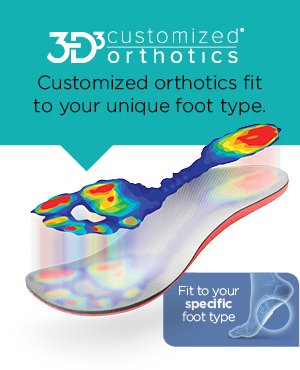Leg Length Discrepancy
Related Conditions:
People with leg length discrepancy, when one leg is longer than the other, usually have a waddling-type gait where the hips seem to move
up and down during walking as the body tries to compensate for the inequality.
There are two types of leg length discrepancy.
- The first type involves a structural defect, where one bone is longer or shorter than the corresponding bone of the other limb. This can occur within the femur (upper leg bone) or the tibia and fibula (lower leg bones).
- Functional leg length discrepancy results from altered mechanics due to a malposition in the spine or lower extremity.
Causes:
There are many causes of leg length discrepancy.
- Structural inequality is due to interference of normal bone growth of the lower extremity, which can occur from trauma or infection in a child.
- Functional inequality has many causes, including:
- Poliomyelitis or other paralytic deformities can retard bone growth in children.
- Contracture of the iliotibial band.
- Scoliosis or curvature of the spine.
- Fixed pelvic obliquity.
- Abduction or flexion contraction of the hip.
- Flexion contractures or other deformities
of the knee. - Foot deformities.
Symptoms:
In addition to the distinctive walk of a person with leg length discrepancy, over time, other deformities, which help compensate for the condition, may appear:
- Toe walking on the short side to decrease the swaying
during gait. - The foot will supinate (high arch) on the shorter side.
- The foot will pronate (flattening of the arch) on the longer side.
- Excessive pronation leads to hypermobility and instability, resulting in metatarsus primus varus and associated unilateral juvenile hallux valgus (bunion) deformity.
Relief and Prevention:
The object of treatment for leg length discrepancy is to level the pelvis and equalize the length of the two limbs. Inequalities of 2-2.5 centimeters can be handled with the following:
- Heel lifts / adjustable heel lifts can be used inside a shoe where shoes have a full heel counter.
- Heel lifts may be added to the heel on the outside of the shoe along with an internal heel lift.
- Full platforms along the forefoot and rearfoot area of a shoe can be added.
There are many different adjustable heel lifts available on the market. FootSmart, for example, sells Adjust-a-Lift, an adjustable heel lift designed to correct leg length discrepancy. Three separate 1/8" layers enable wearers to adjust height from 3/8" to 1/4" to 1/8" just by removing one or more layers.
Where leg length discrepancy is greater than 2-2.5 centimeters, however, surgery may be needed to shorten the longer limb or lengthen the shorter limb. Please contact your podiatrist for more information.

